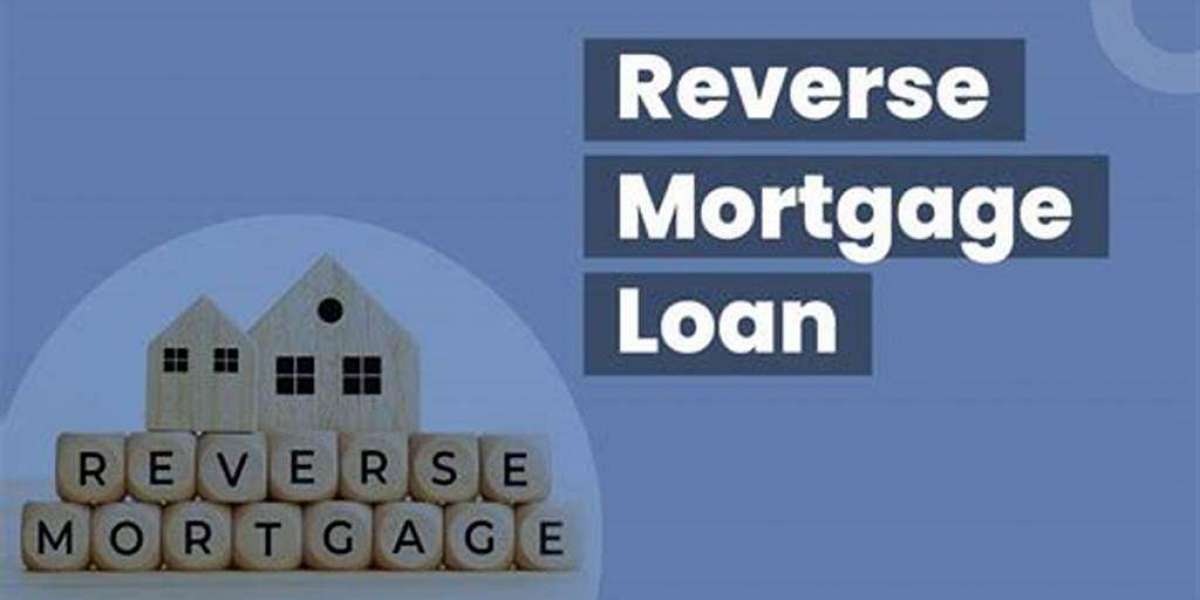A reverse mortgage is a financial product designed for homeowners, typically 62 years or older, that allows them to convert part of their home equity into cash. Unlike traditional mortgages where the borrower makes payments to the lender, in a reverse mortgage, the lender makes payments to the borrower. The key principle of a reverse mortgage is that it allows older homeowners to access their home's equity without having to sell their home, downsize, or take on new monthly mortgage payments. Instead, the loan is repaid when the homeowner moves out, sells the home, or passes away.
How Does a Reverse Mortgage Work?
At its core, a reverse mortgage operates in the opposite way of a traditional mortgage. In a traditional mortgage, a homeowner borrows money from a lender to purchase a home, and they repay the loan in monthly installments over time. With each payment, the borrower reduces their loan balance and increases the equity in their home.
A reverse mortgage, however, works the other way around. In this case, the homeowner already owns the home (or has substantial equity), and they borrow against that equity. Instead of making monthly payments to reduce the loan balance, the loan balance increases over time as interest accrues on the loan. The lender pays the borrower in a variety of ways, such as a lump sum, regular monthly payments, a line of credit, or a combination of these.
The loan is generally repaid when the homeowner dies, sells the home, or no longer lives in the property. At that point, the home is typically sold, and the proceeds are used to pay off the loan balance. If the home's value exceeds the loan amount, the remaining equity is passed on to the homeowner or their heirs. If the home's value is less than the loan balance, the Federal Housing Administration (FHA) insurance—part of most reverse mortgages—covers the difference, so neither the borrower nor their heirs owe more than the home’s value. This is known as a non-recourse loan.
Types of Reverse Mortgages
There are three main types of reverse mortgages, each with different characteristics and target audiences.
- Home Equity Conversion Mortgage (HECM):
The most common type of reverse mortgage, the HECM, is insured by the Federal Housing Administration (FHA). It is available to homeowners aged 62 and older and must be taken out on a primary residence. The FHA guarantees that the homeowner will receive their payments as long as they meet the loan terms. HECM loans also have flexible payout options, including lump sums, monthly payments, or a line of credit that borrowers can tap into when needed. However, there are limits to the amount of money that can be borrowed, based on the home's value, the homeowner's age, and current interest rates. - Proprietary Reverse Mortgage:
These are private loans offered by financial institutions and are not backed by the FHA. Proprietary reverse mortgages are generally used for homes with higher values, as they can offer larger loan amounts than HECM loans. These may be an option for homeowners with properties exceeding the HECM loan limits. However, they do not carry the same government-backed protections as HECMs, so borrowers need to review the terms carefully. - Single-Purpose Reverse Mortgage:
Offered by some state and local government agencies or nonprofit organizations, single-purpose reverse mortgages are designed for a specific purpose, such as home repairs or property tax payments. These loans usually have lower costs but limit how the funds can be used. Single-purpose reverse mortgages are often the least expensive type but are less common and available only to homeowners who meet certain income and financial need criteria.
Eligibility Requirements
To qualify for a reverse mortgage, a homeowner must meet specific criteria, which may vary depending on the type of reverse mortgage they are applying for:
- Age Requirement: The borrower must be at least 62 years old. In the case of married couples, the younger spouse must also be at least 62 if they are to be a co-borrower.
- Primary Residence: The property must be the borrower’s primary residence. If the homeowner lives elsewhere for more than 12 months, the loan may need to be repaid.
- Home Condition: The property must be in good condition and meet HUD (for HECM) or lender requirements. If the home needs repairs to qualify, the loan may include funds to cover necessary repairs.
- Financial Assessment: Lenders perform a financial assessment to ensure the borrower has the ability to maintain the home, including paying property taxes, homeowners insurance, and upkeep.
Reverse Mortgage Payout Options
Homeowners who take out a reverse mortgage can receive the loan funds in several ways:
- Lump Sum Payment: The borrower receives all the funds upfront. This option is usually fixed-rate.
- Monthly Payments: The homeowner can opt for equal monthly payments over a set period or for as long as they live in the home.
- Line of Credit: The borrower establishes a line of credit to use as needed. The unused balance grows over time, giving homeowners flexibility if they don't need all the money right away.
- Combination: Borrowers may choose a combination of monthly payments and a line of credit.
Costs Associated with Reverse Mortgages
While reverse mortgages can provide significant financial relief, they are not without costs. Some of the common fees and costs include:
- Origination Fee: Lenders typically charge this fee to cover the cost of processing the loan.
- Mortgage Insurance Premium: This fee is charged for HECM loans to ensure the borrower and heirs are protected if the loan balance exceeds the home’s value at the time of sale.
- Closing Costs: Borrowers will also be responsible for typical mortgage-related closing costs, such as appraisal fees, title insurance, and recording fees.
- Servicing Fee: Some lenders charge a monthly fee to manage the loan.
These costs are often rolled into the loan balance, reducing the homeowner’s equity.
Pros and Cons of Reverse Mortgages
Pros:
- No Monthly Payments: Borrowers don’t have to make monthly payments, which can be particularly helpful for retirees on a fixed income.
- Stay in Your Home: A reverse mortgage allows homeowners to stay in their homes while accessing their equity.
- Tax-Free Income: The money received from a reverse mortgage is not considered taxable income because it’s a loan, not earnings.
- Flexible Payment Options: Borrowers can choose from a range of payment options based on their needs.
Cons:
- High Fees and Costs: Reverse mortgages often come with high upfront fees, which can reduce the net amount a homeowner receives.
- Equity Erosion: The loan balance grows over time, reducing the homeowner’s equity and potentially leaving less for heirs.
- Repayment Conditions: The loan becomes due when the homeowner no longer lives in the house, which can happen due to moving into long-term care or passing away.
Conclusion
A reverse mortgage can be a useful financial tool for seniors seeking to supplement their income, especially for those who want to stay in their homes during retirement. However, the decision to take out a reverse mortgage should be made carefully, considering all the costs, responsibilities, and long-term effects on home equity and inheritance. Understanding the types of reverse mortgages, their benefits, and their potential drawbacks is essential for homeowners considering this financial product.







